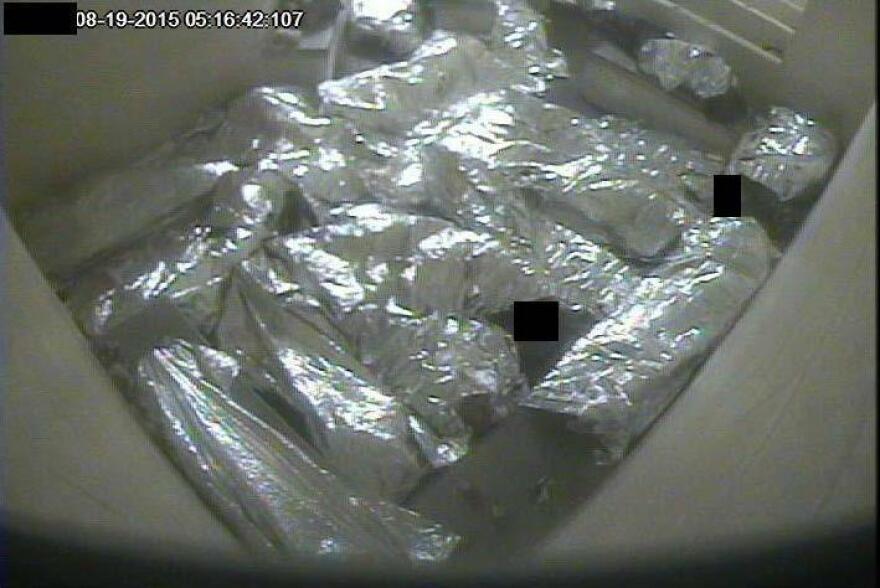As part of a lawsuit against U.S. Customs and Border Protection, new images from surveillance video have been released to the public that show detained immigrants crowded into cramped concrete holding cells in Arizona.
Lawyers arguing on behalf of detained immigrants said the images help prove allegations that the use of the holding cells is unconstitutional, and The Arizona Republic newspaper stepped in to request that the images be released to the public.
The U.S. had argued that releasing the images "would violate privacy rights of migrants and Border Patrol and could raise security concerns," The Associated Press writes.
The images were released Thursday on the order of a federal judge. All faces in the stills have been blacked out.
The holding cells were designed to be used for temporary holding — a period of hours. The American Immigration Council analyzed Border Patrol data and concluded that from September 2014 to August 2015, two-thirds of immigrants detained in Border Patrol facilities in the Southwest were held for more than 24 hours, and tens of thousands of people were held for more than three days.
Photos of the cells show people crowded together in concrete cells.
Several images show prisoners sitting or sleeping on bare floors with no mats available to them — even when there are unused mats in empty cells.

One image shows a woman changing a baby on a concrete floor strewn with trash.

Many of the pictures show detained immigrants wrapping themselves in shiny Mylar sheets for warmth.
As NPR's John Burnett has reported, immigrants call the group holding cells "la hieleras" — the freezers.
"The concrete cells are used by the Border Patrol to house adult and underage immigrants for days or weeks while they're being processed into U.S. immigration courts," John explained in 2014. At the time he was reporting on claims of abusive and inhumane treatment by the Border Patrol in Texas.

After being kept in the holding cells, immigrants "are usually deported or transferred to the custody of U.S. Immigration and Customs Enforcement, which has long-term detention centers," The Associated Press reports.
Eldon Vail, a former corrections administrator serving as an expert for the plaintiffs, said in court documents that in his opinion the use of the holding cells, as shown in the images, causes unnecessary harm and poses a risk to the people detained.
He noted that some of the surveillance stills show people "crammed so tightly, they look like sardines in a can."

Vail also noted the absence of "even a modicum of privacy" for detainees using the toilet, located in clear view of the rest of the room.
The detainees were being housed in "conditions that are unnecessarily harsh, dangerous and contrary to accepted industry practices and standards," he concluded.
The AP reports that the Border Patrol did not directly address the photos, but said in a statement that it is "committed to the safety, security and welfare of those in our custody, especially those who are most vulnerable."
Copyright 2021 NPR. To see more, visit https://www.npr.org.







